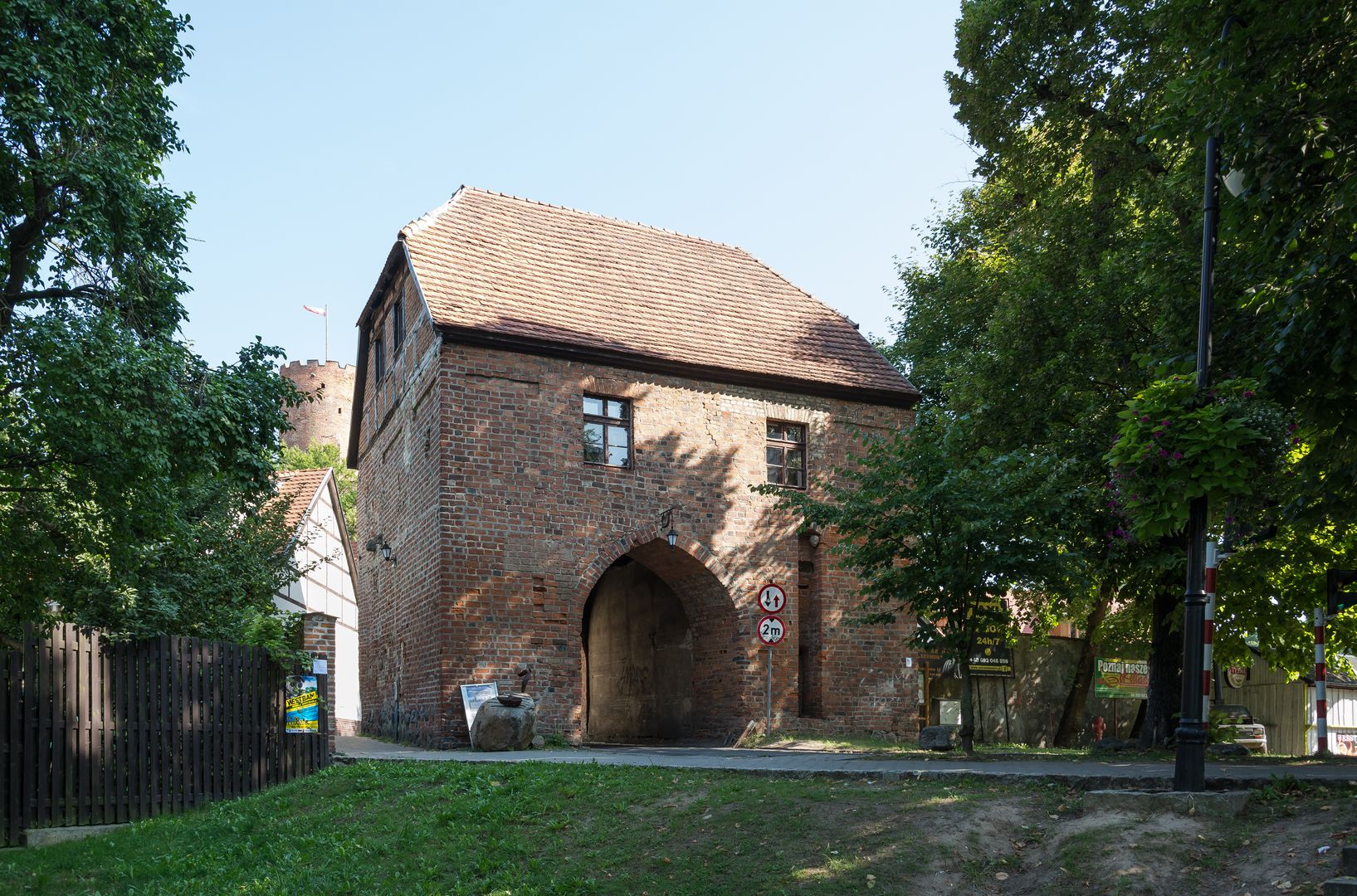Polish Gate in Łagów
7.13

Overview
The Polish Gate, also known as the Poznań Gate, is a historic city gate located in Łagów, entered into the register of immovable monuments of the Lubuskie Voivodeship. Built in the mid-15th century from brick in the Gothic style, it was part of the town's defensive fortifications and served as the eastern entrance. In later centuries, during the 17th and 19th centuries, the gate was partially rebuilt, which altered its original character. In the 19th century, the embrasures were converted into windows, adapting the structure for residential use. The gate received its name due to the road that led towards Poland and the Polish Suburb located behind it. Today, it is a tourist attraction, and its appealing location near Lake Łagowskie and the canal connecting Lake Ciecz and Łagowskie enhances its tourist appeal. Architecturally, the Polish Gate is a two-story, unbasemented structure with an arched passageway, covered with a gable roof. The walls are made of ceramic brick, with minimal architectural details. An interesting feature is the decorative element in the form of rhombuses, created from overfired bricks. After 1945, the building was not inhabited, but from the 1960s it was used as a youth hostel. In 1968, the visibility of the Gothic brick was restored by removing the plaster, and at the turn of the 20th and 21st centuries, it underwent another renovation, adapting the interior into guest rooms under the management of the Polish Angling Association. The gate remains not only a testament to the region's history but also an important cultural and tourist landmark in Łagów.
Location
2025 Wizytor | All Rights Reserved